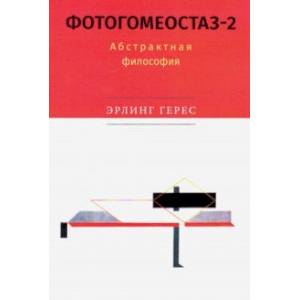Photo-switches-2. Abstract philosophy
Please sign in so that we can notify you about a reply
Since the content of the abstract part (section 2) of the book "Photo-Homeostasis-1" may seem difficult for perception, the author decided to supplement the book with a real text called "Photoostasis-2. Abstract philosophy ", also built on the principles of abstraction and generalization. In the topic 1 of the book "Photoostasis-1", the author wonders if it is possible to think about everything at once. Having set such a question, the author delves into abstract philosophy. Like any computer, a person can learn to think about everything at once, using the principles of abstraction.
This book gives more detailed explanations of the hypotheses put forward in "Photoostasis-1", which relate to:
- a common working language used for the communication of a person and a computer and called a "abstract language" containing letter and numerical Symbols (Chapter 92 Books 1),
- an abstract and generalized system called an "abstract system", which, due to its simplest properties, can be applicable to all that exists,
- an abstract and generalized body called a "abstracted body ", which, thanks to its simplest properties, can be attributed to organic and inorganic physiology and psychology,
- a large simulation model called" Creator of Knowledge ", i.e. Anyone who creates knowledge.
It should be noted that not one of the models described in the book is complete, but at the same time is seen by a sufficient basis for further research. The abstraction is based on the strength of the creation described by the author in Part 8 of the book 1, where he illustrates the model of creation using scheme 8a. Perhaps the 8A scheme is not very visual, but it clearly shows that any state encourages a living creature to any action (B) The fact that it is dead (a) and has no feelings is in an immanent state in the absence of emotional reactions. A charred object or a burned dead
organic body does not feel pain. On the contrary, a charred living creature feels pain. Thus, the word pain can only be used in relation to living beings. We can say that the "car" is an ecological concept, since in this book, where the machine is mentioned, this word refers to the environment, while "language" is a sociological concept, because this word refers to sociology. As you can see, words are used in different ways. In this book, the word "charred" is used in relation to both organic and inorganic, while the word "pain" is related exclusively to the living creature. Probably, in this abstracted language, only one hundred or two hundred verbs can be dispensed with, given the very simplified structure of the working language
This book gives more detailed explanations of the hypotheses put forward in "Photoostasis-1", which relate to:
- a common working language used for the communication of a person and a computer and called a "abstract language" containing letter and numerical Symbols (Chapter 92 Books 1),
- an abstract and generalized system called an "abstract system", which, due to its simplest properties, can be applicable to all that exists,
- an abstract and generalized body called a "abstracted body ", which, thanks to its simplest properties, can be attributed to organic and inorganic physiology and psychology,
- a large simulation model called" Creator of Knowledge ", i.e. Anyone who creates knowledge.
It should be noted that not one of the models described in the book is complete, but at the same time is seen by a sufficient basis for further research. The abstraction is based on the strength of the creation described by the author in Part 8 of the book 1, where he illustrates the model of creation using scheme 8a. Perhaps the 8A scheme is not very visual, but it clearly shows that any state encourages a living creature to any action (B) The fact that it is dead (a) and has no feelings is in an immanent state in the absence of emotional reactions. A charred object or a burned dead
organic body does not feel pain. On the contrary, a charred living creature feels pain. Thus, the word pain can only be used in relation to living beings. We can say that the "car" is an ecological concept, since in this book, where the machine is mentioned, this word refers to the environment, while "language" is a sociological concept, because this word refers to sociology. As you can see, words are used in different ways. In this book, the word "charred" is used in relation to both organic and inorganic, while the word "pain" is related exclusively to the living creature. Probably, in this abstracted language, only one hundred or two hundred verbs can be dispensed with, given the very simplified structure of the working language
Author:
Author:Geres Erling
Cover:
Cover:Soft
Category:
- Category:Politics & Social Science
- Category:Phylosophy
- Category:Reference books
ISBN:
ISBN:978-5-00095-864-3
No reviews found
